Imagine stepping into your garden and feeling a burst of joy, no matter the season or weather. Whether you’re just starting your gardening journey or you’ve spent years nurturing your green space, knowing how to maintain its beauty throughout the year can make all the difference. A thriving garden not only brings personal satisfaction but also enhances your outdoor environment, making it a sanctuary of peace and inspiration.
In this article, we’ll uncover the secrets to keeping your garden vibrant and healthy from spring’s first blossoms to winter’s quiet repose. You’ll discover practical tips tailored for both budding gardeners and seasoned enthusiasts, ensuring your garden remains a testament to your care and dedication. From choosing resilient plants to mastering seasonal maintenance techniques, we’ll guide you through the essential steps needed to achieve year-round garden glory. Embrace the joy of gardening with confidence, knowing that a beautiful, flourishing garden is within your reach all year long.
Evergreen Shrubs (Year-Round Greenery)
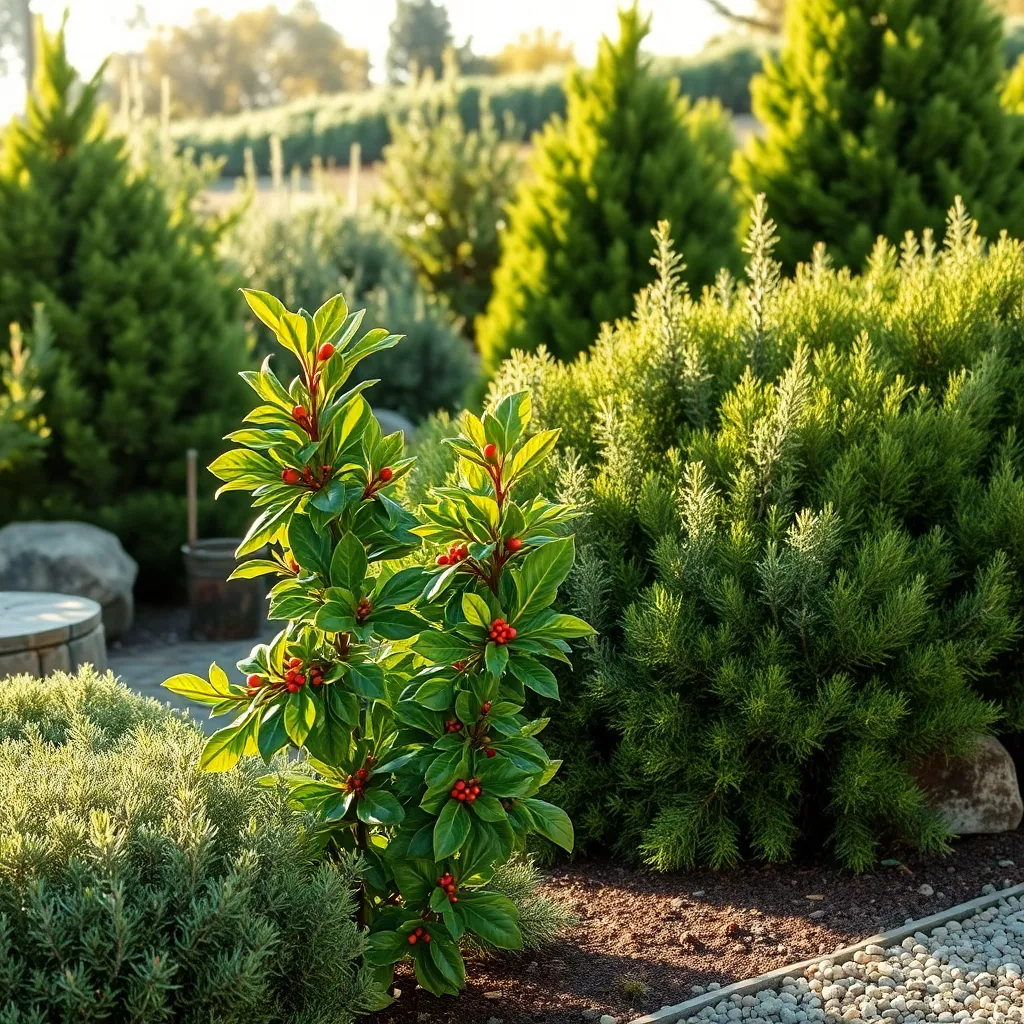
Evergreen shrubs are a fantastic way to maintain a vibrant garden throughout the year, providing color even in the bleakest months. These plants are low maintenance, making them ideal for gardeners of all levels who want a lush landscape without constant upkeep.
When selecting evergreen shrubs, consider their mature size and growth rate to ensure they fit well in your garden space. Popular choices include boxwood, holly, and yew, each offering unique foliage textures and growth habits.
Plant your evergreen shrubs in well-draining soil, enriched with organic matter, to promote healthy growth. Most evergreens prefer full to partial sun, but it’s essential to check the specific light requirements of your chosen variety.
Water newly planted shrubs regularly until they establish a robust root system, typically within the first year. Afterwards, evergreens generally need watering only during prolonged dry spells, making them an excellent choice for low-water gardens.
For advanced gardeners, consider using a balanced, slow-release fertilizer in early spring to encourage vigorous growth and lush foliage. Pruning is another key task; trim back any dead or damaged branches in late winter or early spring to maintain a neat shape and encourage new growth.
Mulch Layering (Weed Suppression and Moisture Retention)
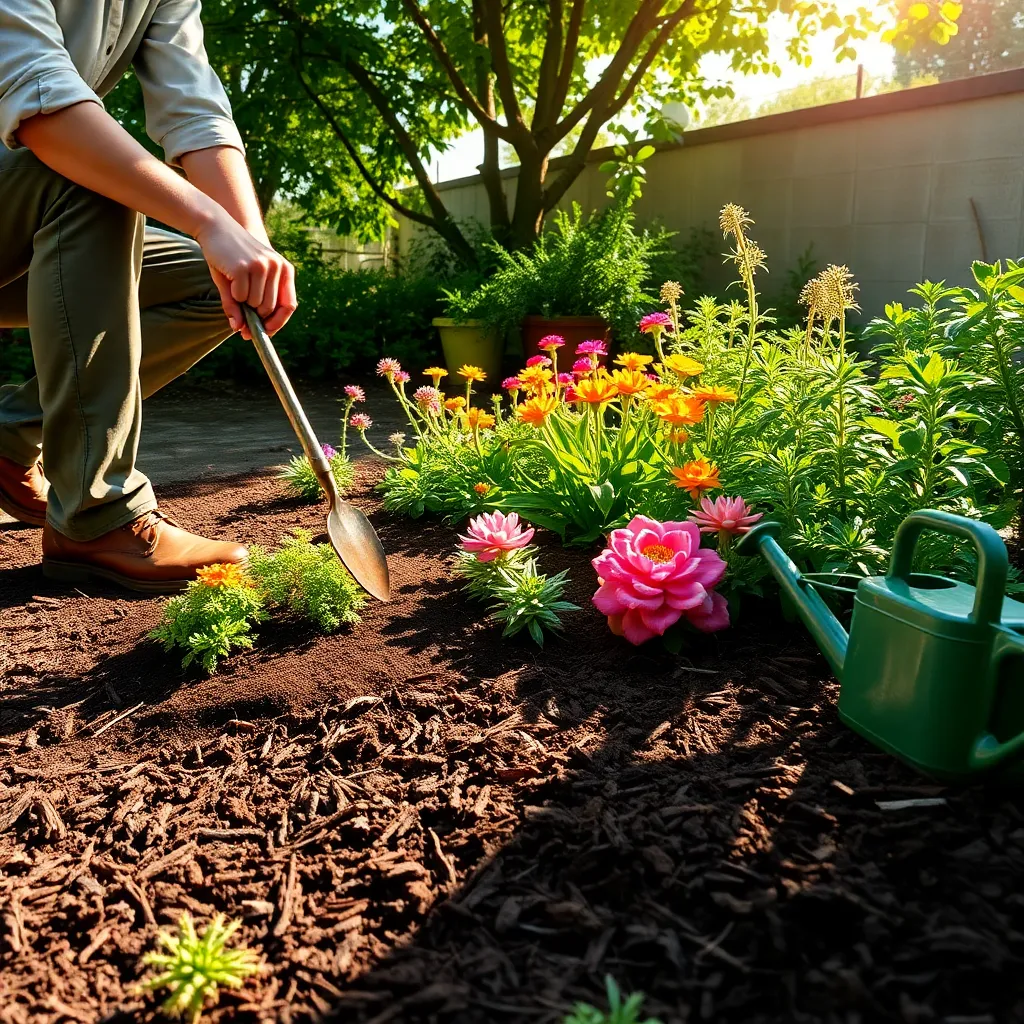
To keep your garden thriving, applying a layer of mulch is an essential practice for both weed suppression and moisture retention. Mulch acts as a protective barrier, covering the soil and preventing sunlight from reaching weed seeds, thus reducing unwanted growth.
Additionally, mulch helps maintain soil moisture by reducing evaporation, which is particularly beneficial during hot, dry spells. This means less frequent watering is needed, allowing you to conserve water while keeping your plants healthy and hydrated.
Choose organic mulches like shredded bark, straw, or wood chips for their ability to decompose and enrich the soil with nutrients over time. For a more decorative touch, consider using colored wood chips or cocoa hulls, which also offer the same practical benefits.
When applying mulch, aim for a depth of 2 to 4 inches to effectively suppress weeds and retain moisture, but be careful not to pile it against plant stems to prevent rot. Renew the mulch layer annually or as needed, especially after heavy rains or when it begins to thin out.
Cold Frame Gardening (Extending the Growing Season)
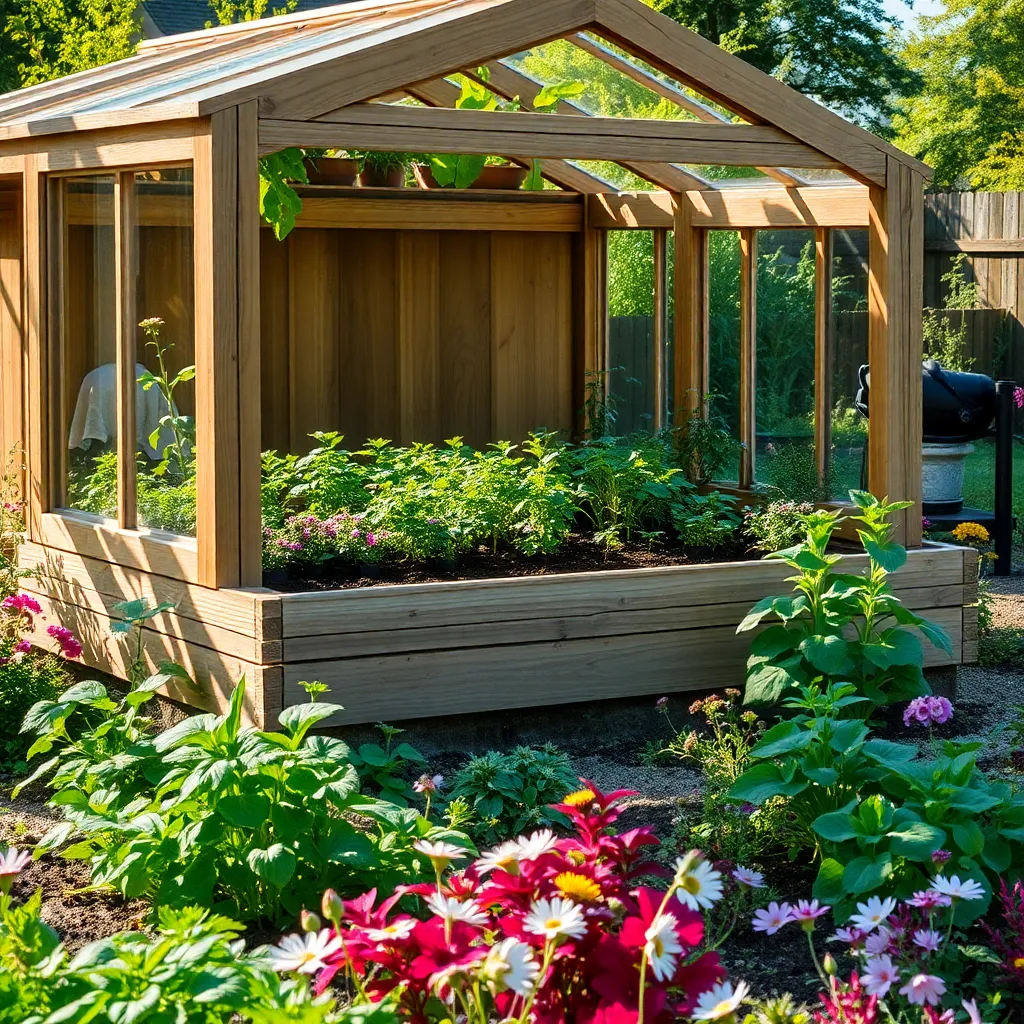
Using a cold frame is an excellent way to extend your growing season, allowing you to grow plants in cooler months. This simple structure traps heat from the sun, creating a microclimate that can protect plants from frost.
To build an effective cold frame, use materials like wood or old windows to create a box-like structure with a transparent lid. Ensure the lid is angled to the south to capture maximum sunlight, which will help maintain warmth inside.
Choose hardy crops such as lettuce, spinach, and radishes, which thrive in cooler temperatures and can easily be grown in a cold frame. For advanced gardeners, consider experimenting with starting seedlings early in the season, giving them a head start before transplanting outdoors.
Regularly monitor the temperature inside your cold frame, as it can quickly become too hot on sunny days. Open the lid slightly to allow ventilation and prevent overheating, ensuring your plants stay healthy and robust.
Pruning Techniques (Seasonal Shape and Health Management)
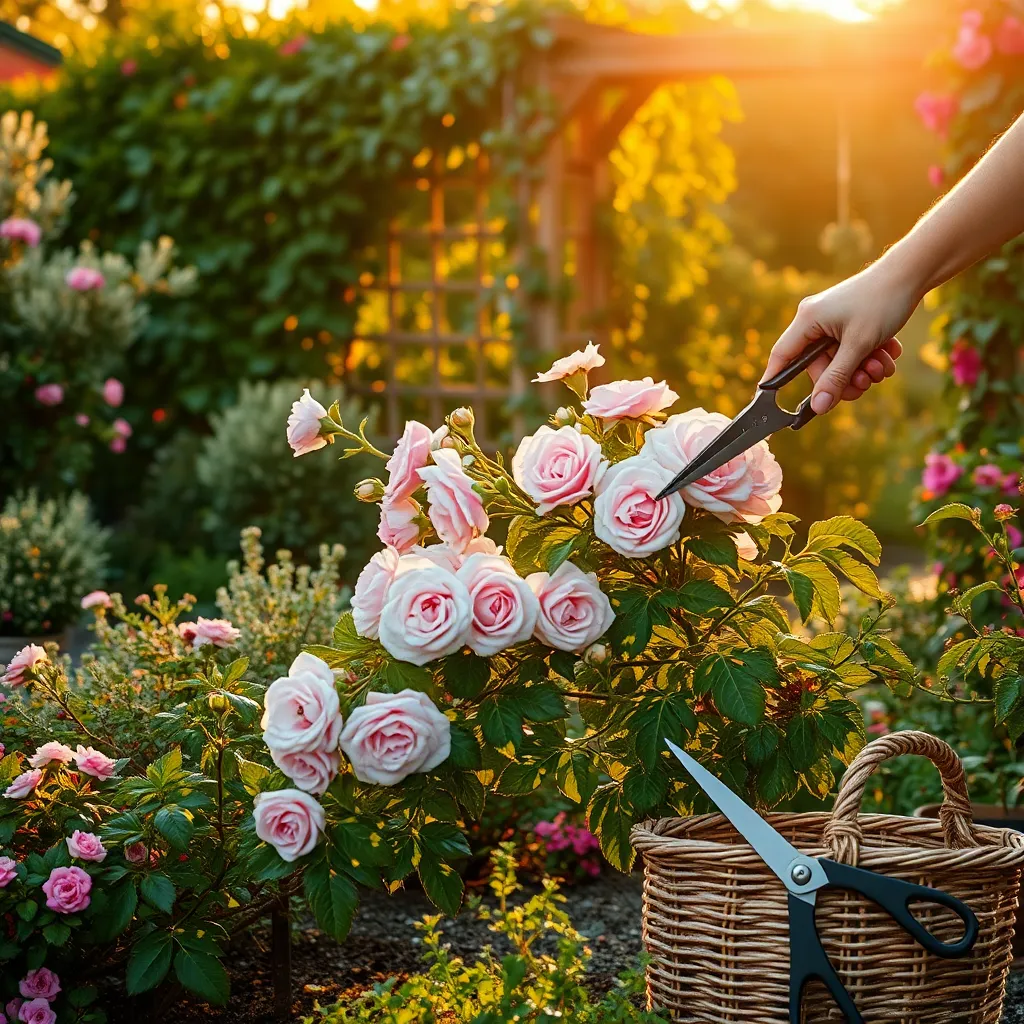
Pruning is an essential gardening practice that enhances both the shape and health of your plants. By removing dead or diseased branches, you prevent the spread of disease and encourage new growth, making your garden look vibrant all year long.
Start by identifying the right time to prune, which varies depending on the plant species. For most deciduous trees and shrubs, late winter or early spring is ideal, while flowering plants like roses benefit from pruning right after blooming.
To effectively prune, use sharp, sterilized tools to make clean cuts, which helps plants heal faster and reduces disease risk. Always cut at a slight angle, just above a bud or branch joint, to support healthy new growth.
For those with more experience, consider advanced techniques such as thinning and heading cuts to manage plant size and shape. Thinning involves removing entire branches to open up the plant, improve airflow, and reduce pest problems, while heading cuts shorten branches to promote bushier growth.
LED Grow Lights (Winter Plant Care and Growth)
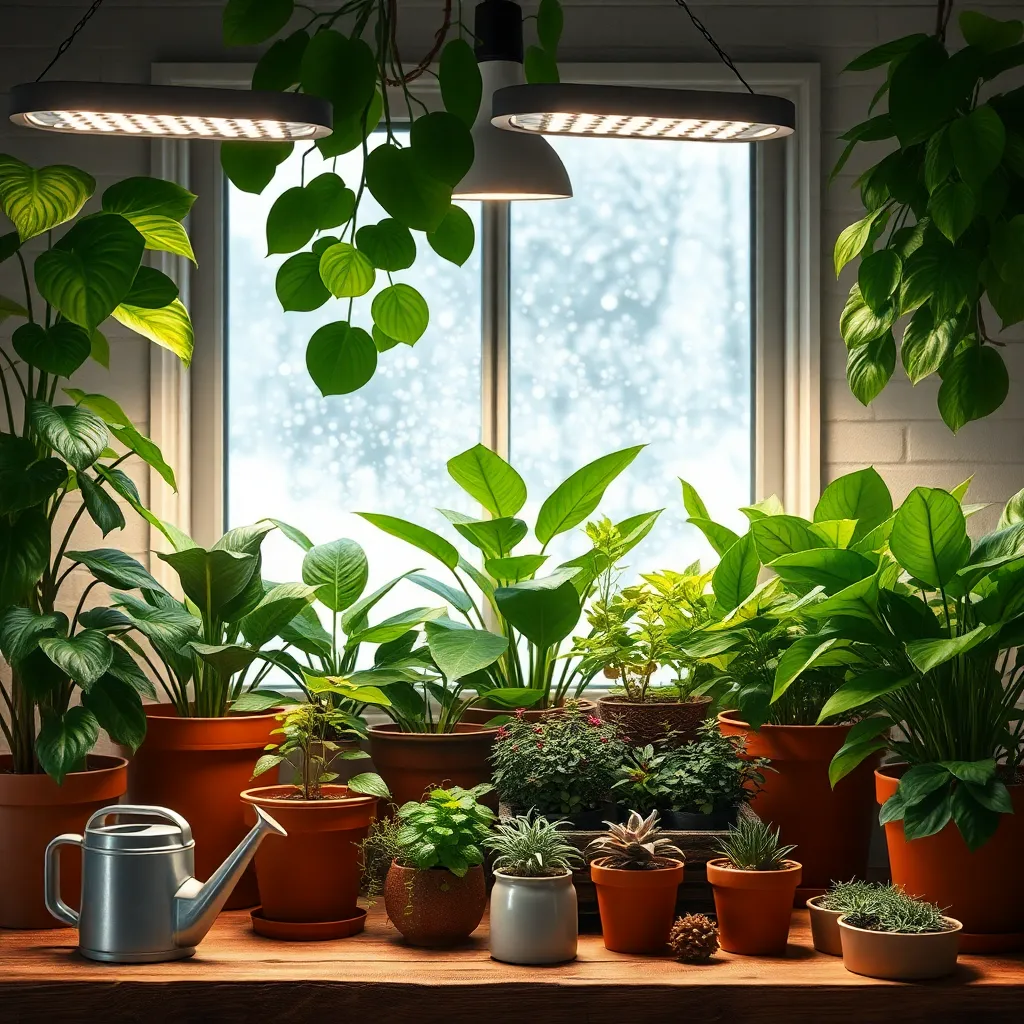
Incorporating LED grow lights into your winter plant care routine can significantly enhance plant growth and health. These lights mimic natural sunlight, providing your plants with the essential spectrum they need during the darker months.
Position LED grow lights about 6 to 12 inches above your plants for optimal exposure. Adjust the height as your plants grow to ensure they receive consistent light without overheating.
It’s important to set the lights on a timer to simulate natural daylight cycles, typically 12 to 16 hours per day. This helps maintain a healthy growth rhythm, reducing plant stress and promoting robust development.
Choose LED lights specifically designed for plant growth, as these have a balanced spectrum conducive to photosynthesis. Higher quality LEDs may cost more initially but will last longer and provide better results, making them a worthwhile investment for dedicated gardeners.
Conclusion: Growing Success with These Plants
In nurturing a garden that thrives year-round, we’ve unraveled five essential relationship concepts: attentive communication, consistent effort, adaptability to change, mutual understanding, and the importance of shared goals. Just as a garden requires regular care and attention, so too do our relationships. By prioritizing open dialogues and being receptive to changes, we create a nurturing environment where love can flourish. Consistency in effort underscores commitment, while understanding and shared objectives solidify the bond further.
As an immediate step, take a moment today to reflect on these principles and identify one small action you can implement in your relationship. Perhaps schedule a regular check-in with your partner or start a new shared hobby—small seeds that can grow into profound connections.
To ensure these insights remain a valuable resource, bookmark this article. It can serve as a handy guide and reminder of the steps you can take to cultivate a relationship that blooms through every season.
Embrace this journey with optimism. With dedication and care, your relationship can not only survive but thrive, echoing the beauty of a well-tended garden. Save this guide, and let it be your compass to a flourishing, enduring bond.

